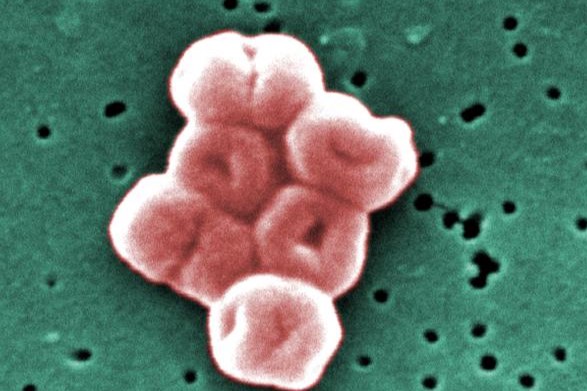A new LAMP assay technique cuts the time it takes to detect the WHO priority pathogen Acinetobacter baumannii and is also more sensitive than conventional methods.
Developed by a research team at Nitte University Centre for Science Education and Research in India, the assay is tested in the paper ‘Evaluation of loop-mediated isothermal amplification assay for visual detection of Acinetobacter baumannii directly from soil and water sample from Mangalore’, which appears in Letters in Applied Microbiology, an Applied Microbiology International publication.

A baumannii is a priority pathogen declared by the WHO, and detection of the organism, especially in hospital environments such as beds, water filters, taps, equipment such as catheters and ventilators which act as a reservoir of the pathogen for outbreaks, is crucial.
Corresponding author Dr Biswajit Maiti said the team had developed a loop-mediated isothermal amplification (LAMP) assay using hydroxy naphthol blue dye to detect A baumannii by targeting its pgaD gene which is involved in the biofilm formation of the pathogen.
Point of care tool
The optimized LAMP assay was used to detect A baumannii in soil and water samples and compared with the PCR assay. The LAMP assay was found to be simple, sensitive, and specific for detecting A baumannii, which can be used as a point-of-care diagnostic tool.
“A baumannii is a well-known nosocomial pathogen that commonly inhabits soil and water and has been implicated in numerous hospital-acquired infections,” Dr Maiti said.
“The existing methods for detecting A baumannii have several drawbacks, such as being time-consuming, expensive, labour-intensive, and unable to distinguish between closely related Acinetobacter species. Thus, it is important to have a simple, rapid, sensitive, and specific method for its detection.”
The pgaD gene of A baumannii was targeted to develop a simple HNB-LAMP assay to detect A baumannii in soil and water samples collected around hospitals, sewage treatment plants, and open drains.
The optimal assay time and temperature were standardized, and so were the assay’s sensitivity and specificity. The LAMP assay was optimized at 63℃ for 60 min.
The LAMP assay was performed using a simple dry bath, eliminating the need for a thermocycler. It was shown to be specific and highly sensitive as it could detect up to 10 pg/μl of A baumannii DNA, while PCR could detect only up to 1 ng/μl of the DNA.
The optimized assay was then used to detect A baumannii in soil and water samples. Out of 27 samples tested, 14 (51.85%) samples were positive for A baumannii through LAMP assay, while only 5 (18.51%) samples were found to be positive through conventional methods.
Simple and specific
Thus, the LAMP assay was found to be a simple, sensitive, and specific method that can be considered a point-of-care diagnostic tool for detecting A baumannii.
“The LAMP assay reduces the time required for detection and requires a simple dry bath to perform the assay. Additionally, it could visually detect positive samples. It is also found to be more sensitive when compared to conventional methods,” Dr Maiti said.
“The assay can be further developed as a point-of-care diagnostic tool for detecting A baumannii from hospital environmental samples. Future work can validate further samples, followed by developing a diagnostic kit to detect A baumannii.”
This study was financially supported by the Indian Council of Medical Research (ICMR), Government of India, through the project (OMI/I3/2020-ECD-I), with resource supported by Nitte (Deemed to be University), Mangalore, India.
The study, ‘Evaluation of loop-mediated isothermal amplification assay for visual detection of Acinetobacter baumannii directly from soil and water sample from Mangalore’, appears in Letters in Applied Microbiology.







No comments yet